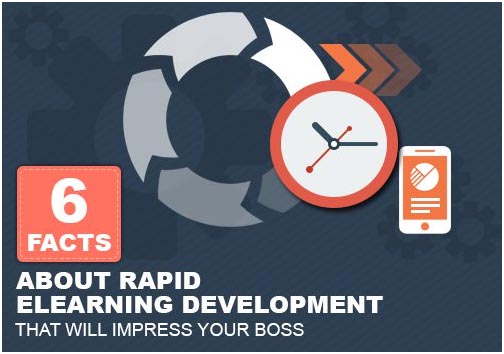
What could be better than a serious game that engages and entertains your remote employees? How about a serious game that builds skills and expands knowledge in 5 minutes or less. In this article, I’ll share 9 top tips to develop microlearning serious games in corporate eLearning.
How To Develop Microlearning Serious Games In Corporate eLearning
Employees are often busy, stressed, and distracted. Bite-size serious games give them the power to continually improve whenever their schedule allows. Best of all, they get to have fun and unlock achievements in the process. Here are 9 helpful tips to develop microlearning serious games for your corporate eLearning program.
1. Focus On One Desired Outcome At A Time
You have a lengthy list of learning objectives, goals, and desired outcomes that you need to achieve. However, it’s wise to focus on one item at a time when creating microlearning serious games. Keep in mind that these games are intended for quick consumption. Employees should get all the information they need to achieve the learning objective. That involves absorbing the data and assimilating it into their preexisting knowledge base. As such, they must be able to devote their full attention to one desired outcome at a time and move on to the next when they comprehend all of the ideas and concepts it entails.
2. Invest In A Serious Game Authoring Tool
There is a number of eLearning authoring tools that specialize in serious game development. They feature media, eLearning templates, and other assets that you can use to springboard your eLearning course design, rather than having to start from scratch. You should also ensure that your Learning Management System can deploy and track your serious game content. Otherwise, you may want to invest in new software with built-in gaming metrics and other key features.
3. Incorporate Memorable Online Training Characters And Challenges
The success of serious games hinges on emotional resonance. Are employees able to connect with the online training characters? Can they relate to the challenges or situations those characters encounter? Online training characters must be relevant and realistic in order to engage your remote employees. You should also incorporate real-world obstacles and environments to enhance immersion. That said, the personas you create should never detract from the learning experience. For example, you don’t need to include a lengthy backstory or assign personality traits and quirks that distract corporate learners from the primary learning objectives.
4. Know Your Employees’ Needs And Personal Preferences
Serious games have to appeal to employees on a personal level, which means that your serious game design must cater to their learning needs, preferences, and objectives. Conduct audience research to learn about their likes, interests, and ambitions. Surveys, interviews, and polls are great feedback tools that offer insight into employees’ personal backgrounds and goals. This data also allows you to create customized eLearning characters and game environments based on employee expectations. You can also use on-the-job observations to spot performance and skills gaps, then integrate them into your serious game design.
5. Find The Right Incentives
Serious games need a built-in reward system. That may come in the form of levels, unlockable objects, or points. These incentives fuel employee engagement and motivation. They have the opportunity to earn specific achievements during each microlearning serious game. As a result, they can mark every milestone as they work toward their long-term goals. This is yet another reason why audience research is so crucial. It gives you the power to determine which rewards are right for your remote employees. Ideally, the incentives should align with their sources of motivation and encourage certain behaviors. For example, improve their task performance or customer service skills.
6. Gather Feedback From Your Corporate Learners
Carry out a test round before you officially launch your microlearning serious game. Invite a select group of employees to put the serious game through its paces, then provide their honest feedback. This gives you a good idea of what needs to be improved prior to uploading it to the Learning Management System and microlearning repository. You can even host a live webinar or focus group after the fact to ask them targeted questions. For example, if they related to the key characters or encountered any glitches.
7. Frame It With A Story
Stories are the framework for microlearning serious games. Albeit, short stories that contain a concise arc, as you need to keep the serious game as brief as possible. Create an outline or eLearning storyboard to focus your design efforts. Incorporate an introduction that allows employees to meet the core characters, followed by the problem or obstacle, then the resolution. You should also give employees all the tools and information they need to use the same approach in the workplace. For example, relay each step of the task throughout the game so that they can improve their performance and overcome obstacles.
8. Pick The Best Genre For The Task
There is a variety of serious game genres to choose from. Action adventure is ideal for employees who want to explore new locales and meet interesting characters, while simulation serious games are a great fit for those who prefer more realism. You can even opt for role playing, strategy, or racing game formats. The key is to pick a genre that suits the tasks and interests of your employees.
9. Keep It Real-World Centered
Serious games can have fantasy elements. However, they must be based in real-world situations or challenges. This fosters an emotional connection with employees and allows them to step into the shoes of the main character, as they have something in common or have experienced similar circumstances. For example, they have faced the same challenge in their professional lives.
Microlearning serious games are interactive, immersive, and emotionally compelling. This makes them the perfect addition to mandatory compliance and task-based online training. They give employees the chance to apply their skills and get caught up in their own imagination. And that’s the secret recipe for corporate eLearning success.
Are you looking for more ways to incorporate microlearning into your online training strategy? Read the article 9 Microlearning Techniques To Use In Instructional Design to discover 10 microlearning techniques to have in mind during the Instructional Design of your eLearning course.



